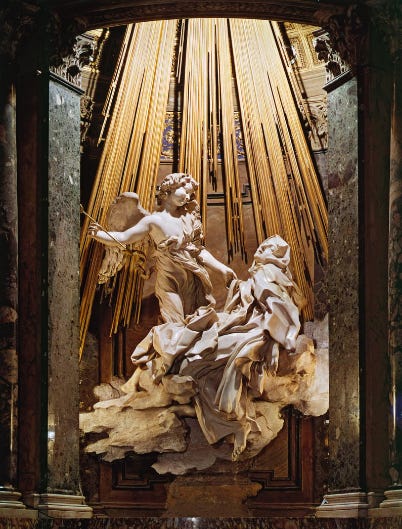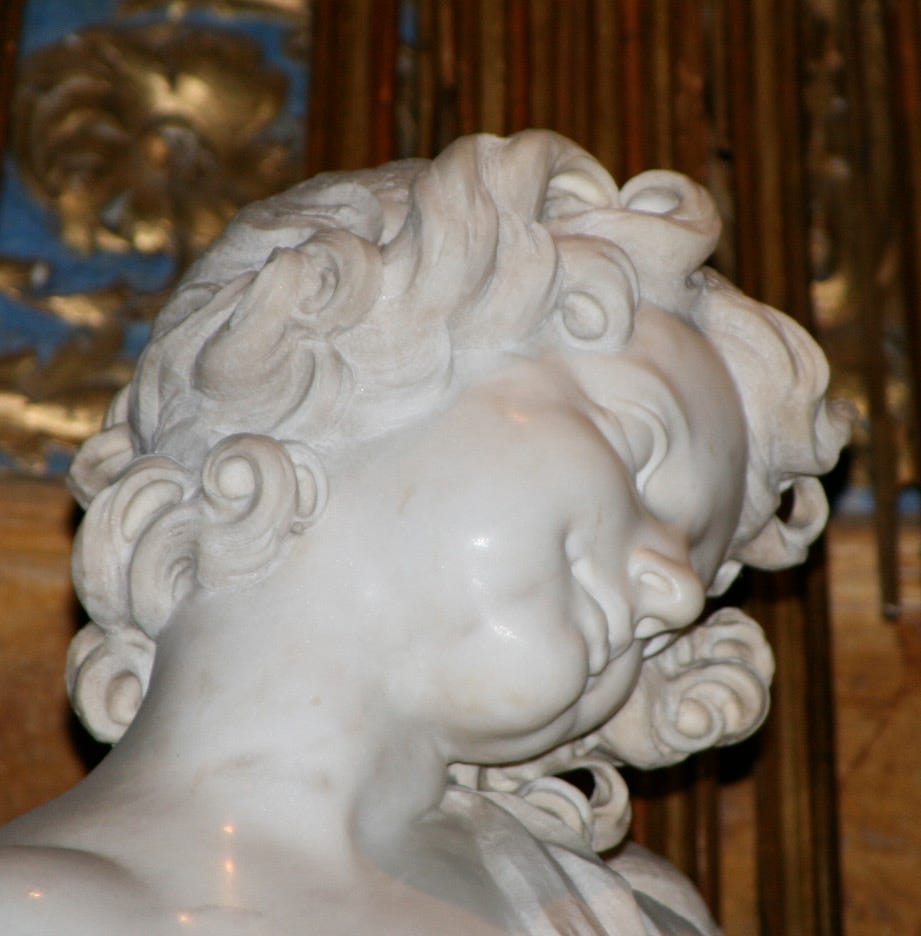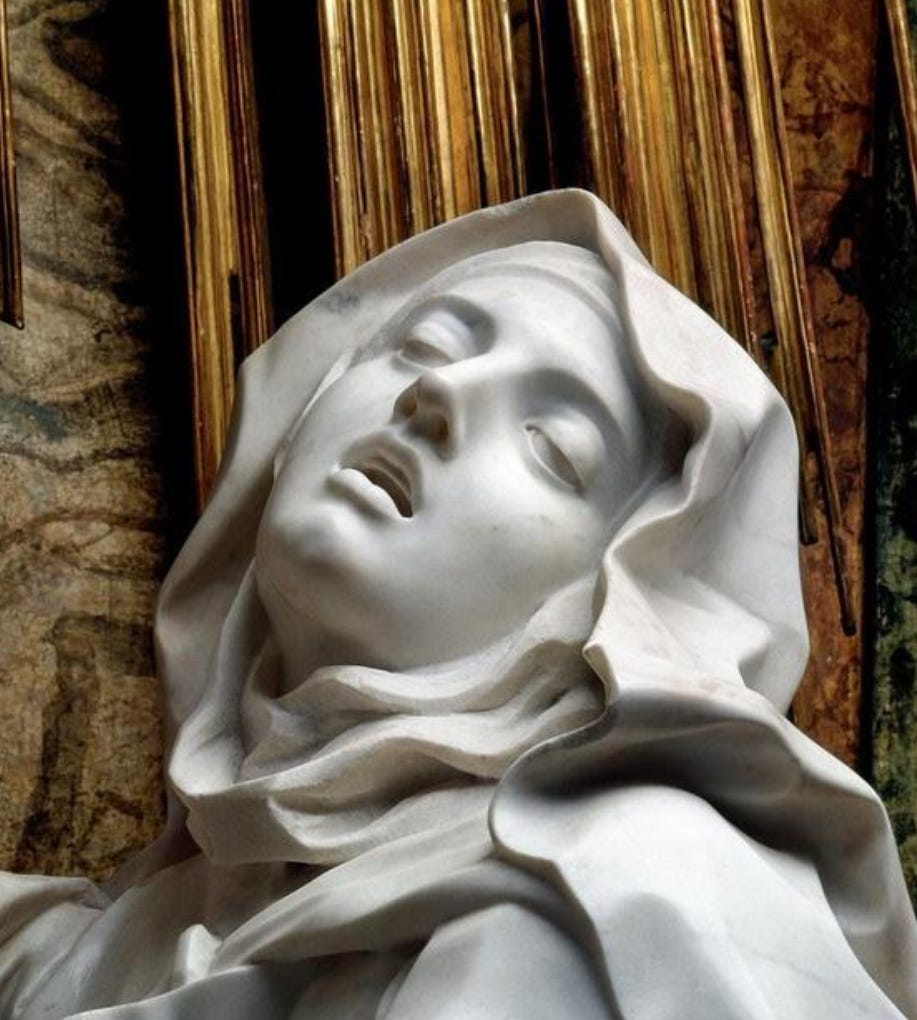I’m sitting in the airport terminal in Halifax, Nova Scotia this morning, thinking about first drafts. I’ve just finished the first draft of a new novel, and I imagine that I’m feeling what lots of us feel at this stage in an artistic project of any kind: is this blob of words any good?
Will it be embarrassing?
Who am I to think that that I can tell this story?
What do I know?
Is there even a real story here?
Who will care?
Who will see and be moved by this wreckage of time and effort?
At moments like this, I like to think of the sculptor, Bernini. Yes, he was a stone-cold genius, his sculptures a conduit to the Divine, however you might perceive such a thing, but to look on finished masterpieces is to gaze upon an immense amount of hidden labor.
We only see the finished product. The chisel marks have been erased, leaving only the pure form, the pure story. But there is another story which we can tell ourselves, as well, and it is a comforting one in the midst of the overwhelm of big art projects.
Looking at my favorite work of Bernini’s, The Ecstasy of Saint Teresa, it’s easy for me to get so lost in the perfection of the statue, that I forget there was a time when that paranormally gorgeous masterpiece was just a hunk of rock, buried in an Italian mountainside.
The statue was made of a specific grade (statuario)of marble from Carrara, in northern Tuscany. This particular stone-type was chosen for its ability to take a high sheen of polish and its tensile strength could more easily hold a form but, in order to release the form from the rock, that piece of statuario had to be laboriously, — dangerously —, cut from the quarry. What emerged first was a chonk of unpolished, unprepossessing marble.
Once cut from the mountainside, the stone had to be placed on pallets and (imagine) hauled two hundred and forty miles to Rome. That’s a long trip by land. Perhaps they sailed down the coast, but still, imagine the collective efforts of all those people to move that single piece of stone. Imagine the faith that you’d have to have that you’d done it right.
Finally, in Rome, the rock was hauled through teeming streets (I’m guessing the traffic then was as wild as it is today) and, finally, it was dragged into the workshop of the sculptor. There it sat, a giant piece of potential with a sculpture, a story, inside.
Bernini had not yet laid a chisel to it.
This is the first draft, and its existence at all is no mean feat. For that stone to get where it was going required focused, hard labor. Late nights, early mornings, blisters and thirst.
The first draft is that chunk of marble, finally sitting in the workshop. Its emergence into the world, into the sunlight, was no given.
Of course, Bernini didn’t cut that stone from the hillside himself, and I very much doubt that he held the ropes that hauled it all that way, but the truth of it is, without that initial, backbreaking, work, there would be no stone at all, nothing to begin crafting the story from.
To all my fellow artists out there, working on something that feels too big, too cumbersome, too rough and too far beyond our abilities to shape, remember that the first draft is only the acquisition of the stone.
There’s a story in that rock, and it will emerge. You will find it. But take a moment to pat yourself on the back. You’ve accomplished the hardest part of your job. Take a breath. Give it a little time. Be satisfied, first of all, that you accomplished what seemed impossible. There will be time to shape and mold, but none of it would be possible without the stone.
The first draft of anything is not a masterpiece, but that masterpiece might be waiting in there for you, only inches away. You’ve done a good job. You’re doing a good job. Keep going, my friend.






I love this analogy. This is exactly why I have been sharing your insights with my students who are beginning writers — I know there are some out there who are born to do it, but they just aren’t sure how. Your work and writing are truly inspiring. Thanks for doing what you do!
I'm so happy you're writing another novel! I've read and reread Great Glorious Goddamn more times than I can count. I have about three hundred books, but Great Glorious Goddamn is on a special shelf with a handful of other favorites and a little glass-and-porcelain lighthouse. Beacons, all.